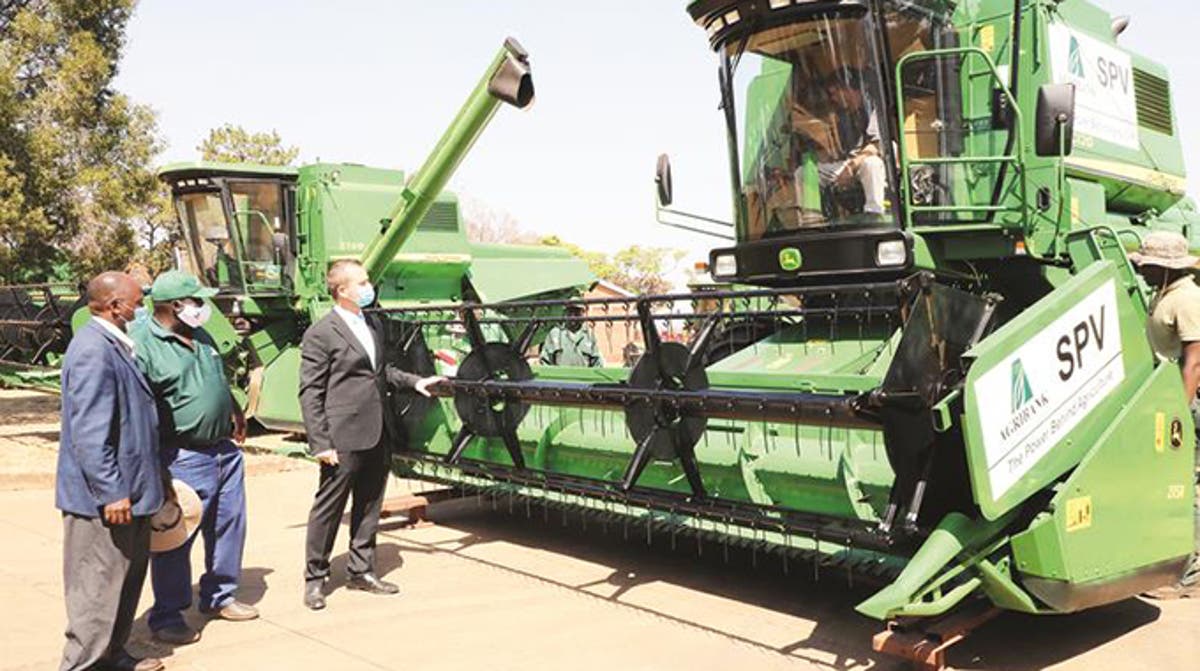A brilliant year for Zim’s agriculture, thanks to good rains
Amid the rising deaths and economic gloom brought about by Covid-19, agriculture, the country’s economic mainstay is shining bright.
The country’s agricultural star is shining and heading for a bumper crop following widespread rains that have remained above normal throughout the country in the 2020 -2021 cropping season.
Most farmers are upbeat that a bumper crop is on the horizon and hopes are high that the sector will deliver strong growth to the economy despite Covid-19 setbacks.
Successive droughts over the past few years have negatively affected agricultural growth. With the current crop hectarage and state of the crops, indications are already pointing to a bumper harvest as the country awaits Government’s results from the crop and livestock assessment.
The Ministry of Lands, Agriculture, Fisheries, Water and Rural Resettlement will this week begin the nationwide First Round Crop and Livestock Assessment to give the area planted under different crops, the state of the crops and will also reveal the state of livestock, availability of pastures and water among other things.
The exercise will also identify areas of interventions as they relate to saving the crops and livestock and also make recommendations.
Meanwhile, as the nation waits for the actual projections, indications are already pointing to a bumper harvest.
The improvement in hectarage under cropping has been attributed to early inputs distribution, especially under the Presidential Inputs programmes, training of farmers, empowerment and capacitation of extension workers and robust monitoring and evaluation as dictated by the Agricultural Recovery Plan.
There was also early general preparedness.
Capacitation of extension staff through increased mobility and appropriate training for effective technical backstopping and coaching of farmers in light of Good Agricultural Practices also helped, thanks to President Mnangagwa, who mobilised 5 000 motorcycles for extension staff.
The introduction of conservation agriculture popularly known as Pfumvudza/Intwasa also motivated some poorly resourced farmers who did not have draught power after losing their oxen to tick-borne diseases or drought. The early distribution of inputs resulted in most farmers who rely on rain fed agriculture planting with the first rains.
Rains have continued in most parts of the country and this year the usual mid-season dry spell which affects crops was not experienced.
Zimbabwe normally experiences the mid-season dry spell in January.
During the past years the dry spell has been severe lasting up to three weeks resulting in large hectares of crops being written off. Weather experts have predicted a normal rainfall season this year.
The bulk of the crops countrywide; maize, small grains, cotton and tobacco are in good condition.
The early planted maize is now tasselling while some tobacco farmers are now reaping and curing their crop.
By January 12, farmers had planted 1,4 million hectares of maize, representing a 137 percent rise in the area planted compared to the same period last year, mainly attributed to good rainfall forecast and early distribution of inputs.
Farmers had also had planted 36 274 hectares of soyabean compared to 34 947ha last year, 160 000 of sorghum compared to 118 070ha last season, 95 699ha of pearl millet against 76 239ha last year and tobacco hectarage increased by seven percent from 100 43ha last year to 107 254ha this season.
Zimbabwe has set a target of 3,6 million tonnes of maize for the forthcoming summer cropping season.
The normal to above normal rains have also brought some challenges chief among them water-logging and leaching.
Agritex extension officers and agricultural experts have advised farmers to drain their field sand also to apply top dressing fertilisers in split applications.
The rains have also affected movement of other inputs such as top dressing fertilisers and livestock inputs such as tick grease.
Besides a good harvest from the summer cropping season, some farmers are already eyeing a better crop for the next winter cropping season.
The current rains have assured farmers of adequate water for irrigation during winter and most farmers have expressed their eagerness to grow inter crops and boost their profits.
Even though it is still early with other threats looming — fall armyworm, locusts and leaching, we can now safely say with caution, of course, that Zimbabwe is poised to have one of the best yields in years after suffering back-to-back droughts.
Over the past few years, Zimbabwe has spent millions of dollars to import maize and wheat and the bumper crop this year means that the country would spend less on imports and make huge savings.
Addressing land inequalities and disparities on land issues is a critical step to addressing food and nutrition insecurity in Zimbabwe and Africa.
With a bumper harvest on the horizon, Zimbabwe’s land reform programme that has been vilified by most critics in the West, will not be the complete economic disaster widely portrayed by its opponents.
Newly resettled black farmers are now a formidable force and backbone of the country’s agricultural economy.
There is so much activity happening on the ground in various farms across the country and most black farmers are doing remarkably well. A good harvest will go a long way in demystifying the country’s land reform.
Contrary to the country’s critics, a bumper harvest will show that the land reform has not been a total failure or “total catastrophe” as sceptics say.
It will also remove the stereotypes peddled by the critics that the country’s agriculture is in complete ruins characterised by chronic food insecurity.
Much credit should be given to the Government’s commitment to improving productivity among smallholder farmers through improved access to agricultural inputs and improved technologies.
After a bumper crop, Zimbabwe will then need to address more aggressively issues related to access to finance, linking smallholder farmers with markets, improving infrastructure and improving the agriculture value chain.
Grain storage and protection will also be key.–herald.co.zw











